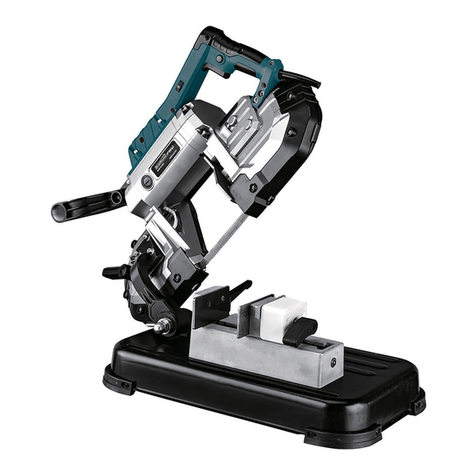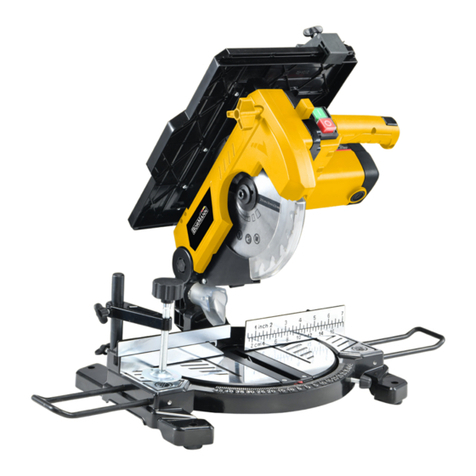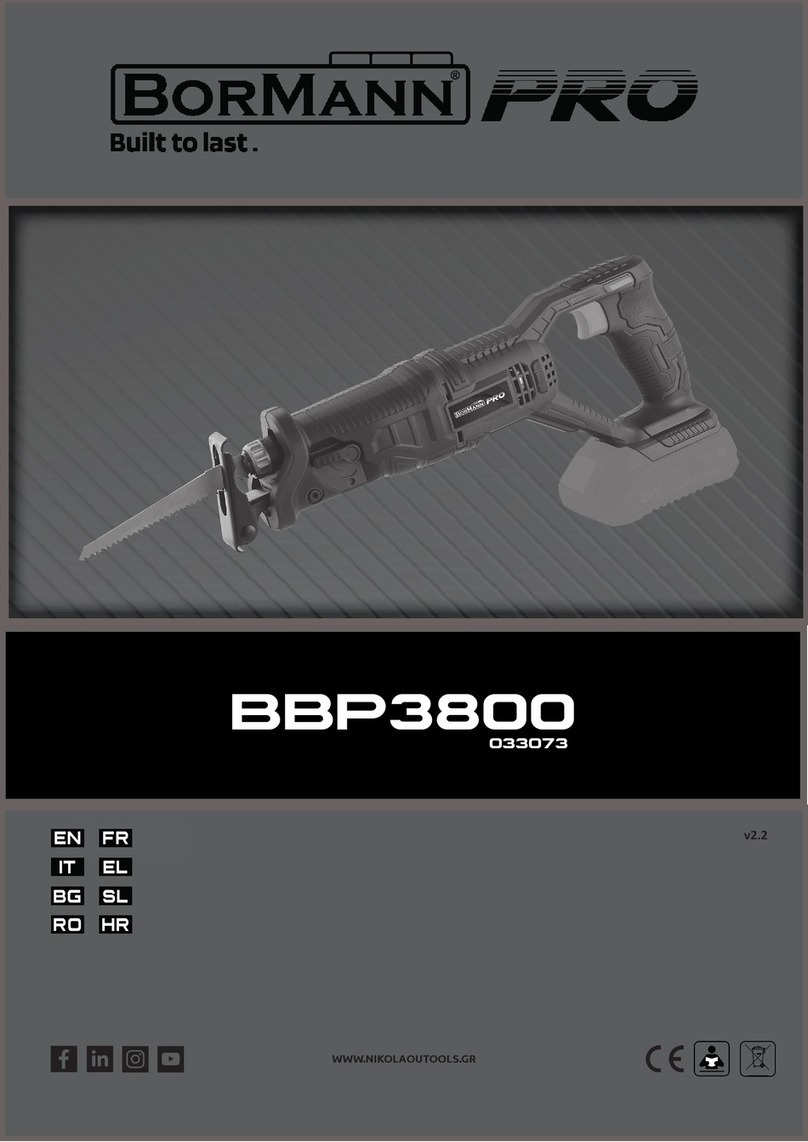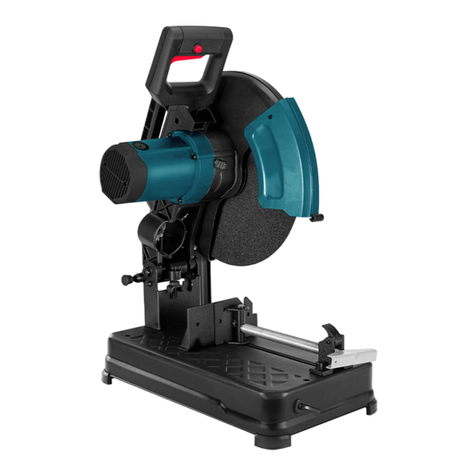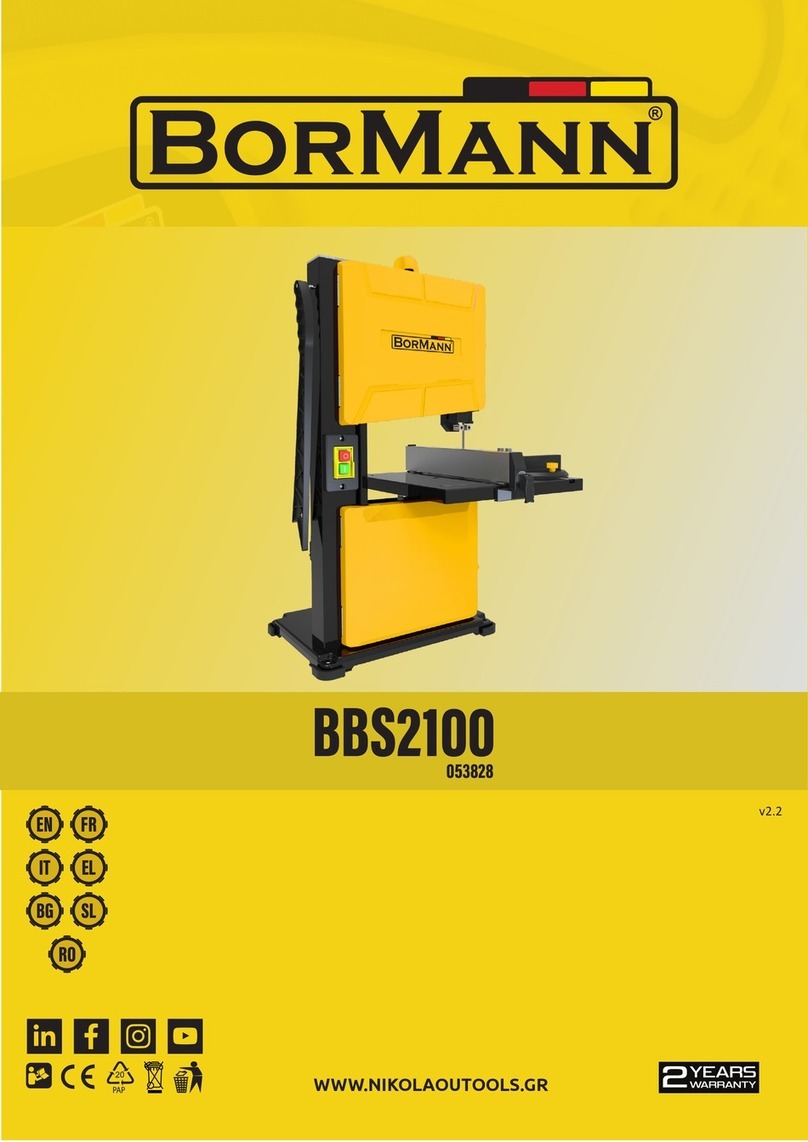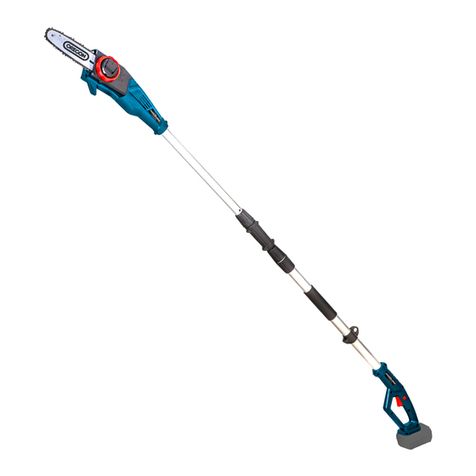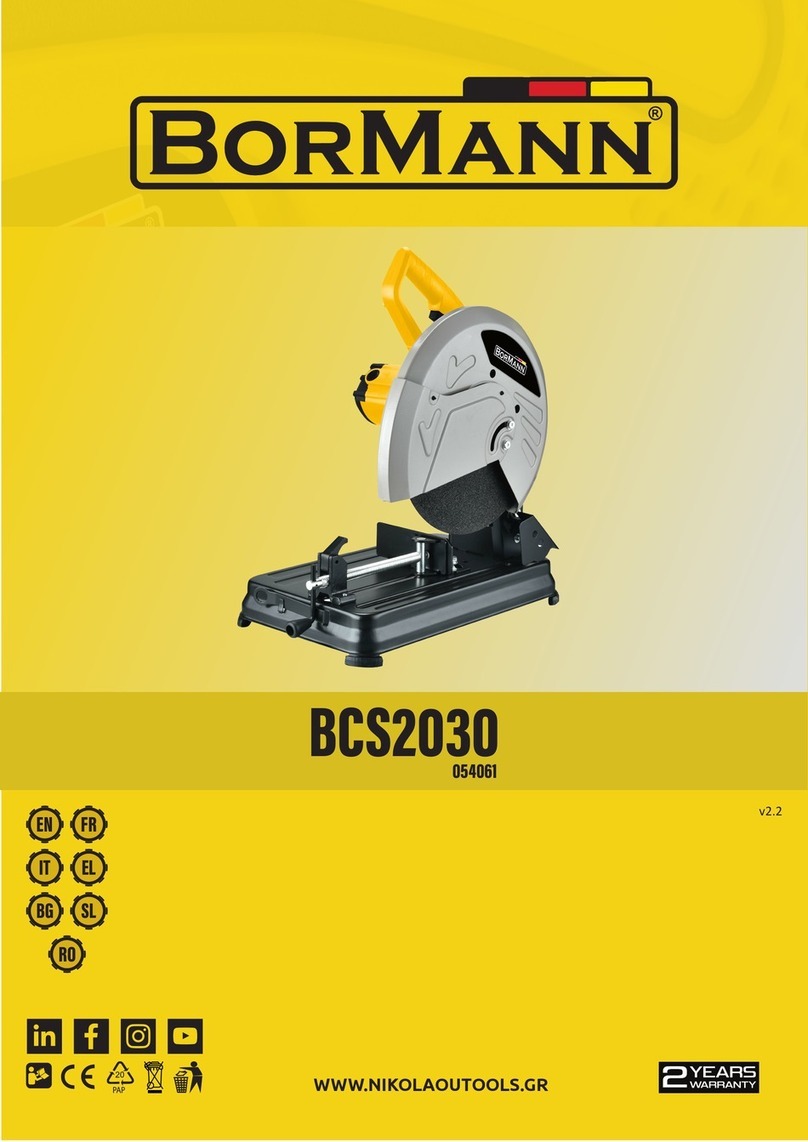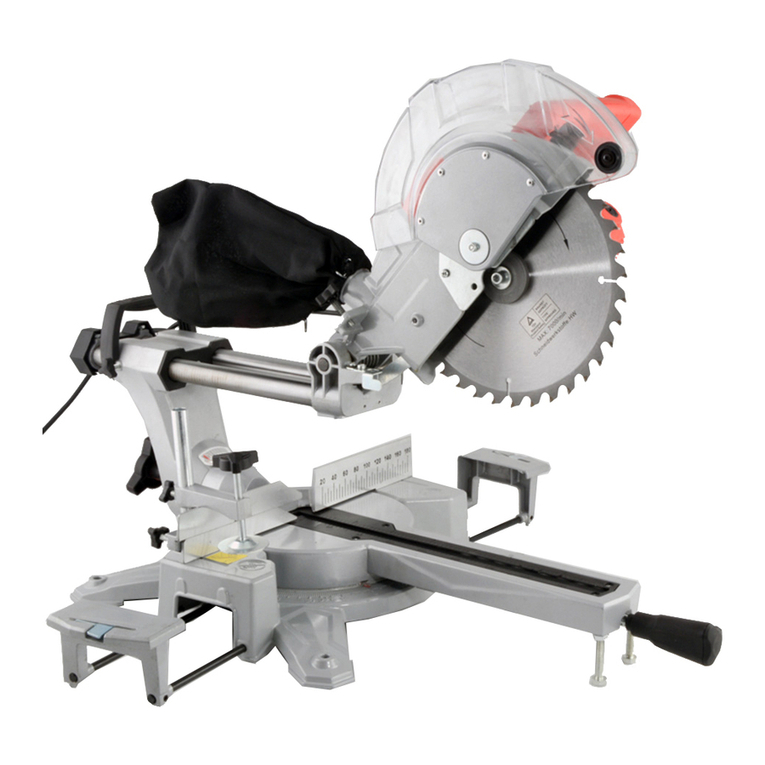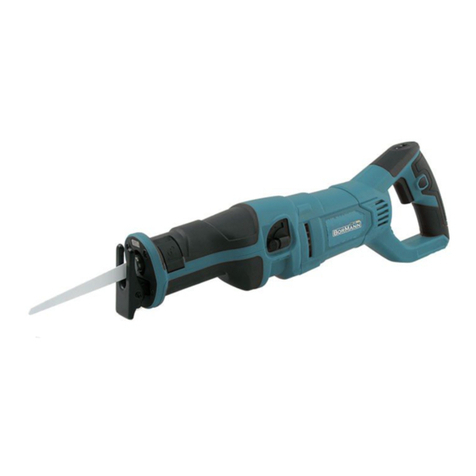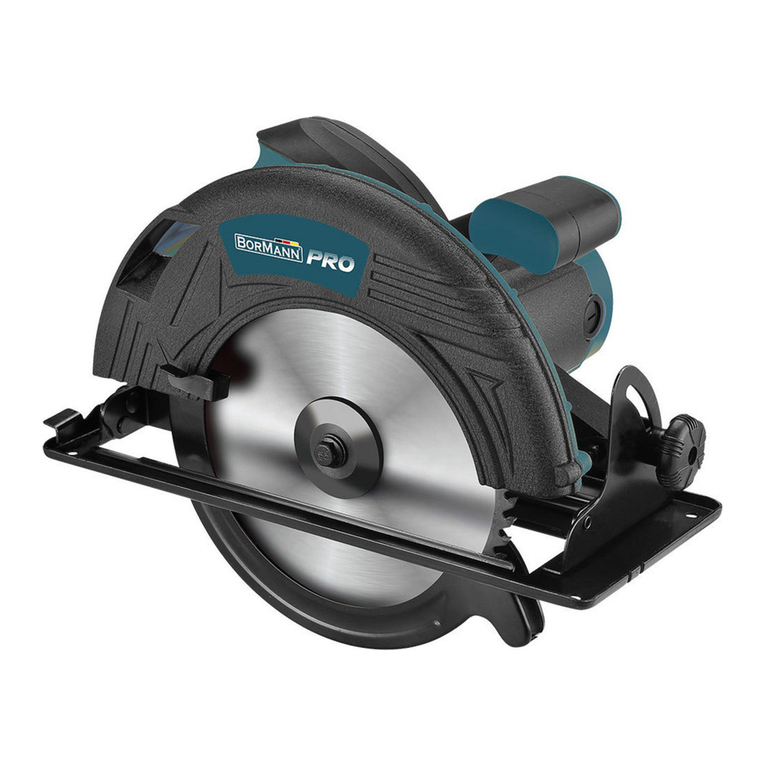
3
I. Safety
This machine is designed for sawing wood, wood derived materials as well as similar to be machined hard plascs only. Machining of other
materials is not permied and may be carried out in specic cases only aer consulng with the manufacturer. No metal workpieces may be
machined. The workpiece must allow to safely be loaded, supported and guided. The proper use also includes compliance with the operang
and maintenance instrucons given in this manual. The machine must be operated only by persons familiar with its operaon and mainte-
nance and who are familiar with its hazards. The required minimum age must be observed The machine must only be used in a technically
perfect condion When working on the machine, all safety mechanisms and covers must be mounted. In addion to the safety requirements
contained in these operang instrucons and your country’s applicable regulaons, you should observe the generally recognized technical
rules concerning the operaon of woodworking machines. Any other use exceeds authorizaon. In the event of unauthorized use of the
machine, the manufacturer renounces all liability and the responsibility is transferred exclusively to the operator.
II. General Safety Notes
Woodworking machines can be dangerous if not used properly. Therefore the appropriate general technical rules as well as the following
notes must be observed. Read and understand the enre instrucon manual before aempng assembly or operaon. Keep this operang
instrucon close by the machine, protected from dirt and humidity, and pass it over to the new owner if you part with the tool. No changes
to the machine may be made. Daily inspect the funcon and existence of the safety appliances before you start the machine. Do not aempt
operaon in this case, protect the machine by unplugging the mains cord. Remove all loose clothing and conne long hair.Before operang
the machine, remove e, rings, watches, other jewellery, and roll up sleeves above the elbows. Wear safety shoes; never wear leisure shoes
or sandals. Always wear the approved working ouit - safety goggles - ear protecon - dust protecon. Do not wear gloves while operang
this machine. For the safe handling of saw blades wear work gloves.
Observe the chapter “save operaon” in this manual. Control the stopping me of the machine, it may not be longer than 10 seconds. Insure
that the workpiece does not roll when cung round pieces. Use suitable table extensions and supporng aids for dicult to handle workpiec-
es. Always lower the blade guide close to the workpiece. With the machine table is inclined use the fence and posion it on the boom side
only. Always hold and guide the workpieces safely during machining. Remove cut and jammed workpieces only when motor is turned o and
the machine is at a complete standsll. Install the machine so that there is sucient space for safe operaon and workpiece handling. Keep
work area well lighted. The machine is designed to operate in closed rooms and must be placed stable on rm and levelled ground. Make
sure that the power cord does not impede work and cause people to trip.
Keep the oor around the machine clean and free of scrap material, oil and grease. Stay alert! Give your work undivided aenon. Use
common sense. Keep an ergonomic body posion. Maintain a balanced stance at all mes. Do not operate the machine when you are red.
Do not operate the machine under the inuence of drugs, alcohol or any medicaon. Be aware that medicaon can change your behaviour.
Keep children and visitors a safe distance from the work area. Never reach into the machine while it is operang or running down. Never leave
a running machine unaended. Before you leave the workplace switch o the machine. Do not operate the electric tool near inammable
liquids or gases. Observe the re ghng and re alert opons, for example the re exnguisher operaon and place. Do not use the machine
in a dump environment and do not expose it to rain. Wood dust is explosive and can also represent a risk to health. Dust form some tropical
woods in parcular, and from hardwoods like beach and oak, is classied as a carcinogenic substance.
Always use a suitable dust extracon device Before machining, remove any nails and other foreign bodies from the workpiece. Use a push
block when working the ends of narrow stock. Always store the push sck or the push wood handle with the machine, also when not in use.
Specicaons regarding the maximum or minimum size of the workpiece must be observed. Do not remove chips and workpiece parts unl
the machine is at a complete standsll.
Do not stand on the machine. Connecon and repair work on the electrical installaon may be carried out by a qualied electrician only. Have
a damaged or worn cord replaced immediately. Make all machine adjustments or maintenance with the machine unplugged from the power
source. Remove defecve saw blades immediately.
Remaining hazards: When using the machine according to regulaons some remaining hazards may sll exist The moving saw blade in the
work area can cause injury. Broken saw blades can cause injuries. Thrown workpieces can lead to injury Wood chips and sawdust can be
health hazards. Be sure to wear personal protecon gear such as safety goggles ear- and dust protecon. Use a suitable dust exhaust system.
The use of incorrect mains supply or a damaged power cord can lead to injuries caused by electricity.
Noise & Dust Emissions:
Noise: Determined according to EN 1807 (Inspecon tolerance 3 dB) Workpiece beech: T=30mm, L=1500mm, moisture 8,5%. Acousc power
level (according to EN ISO 3746): Idling LwA 85,0 dB(A) Operang LwA 96,4 dB(A). Acousc pressure level (EN ISO 11202): Idling LpA 72,6
dB(A) Operang LpA 83,4 dB(A). The specied values are emission levels and are not necessarily to be seen as safe operang levels. Although
there is a correlaon between emission and emission levels, these do not constute a basis for determining the necessity of addional safety
measures. Workplace condions which could inuence the noise emission level include the duraon of resonance, spaal parculars, other
noise sources etc. For example, the number of machines and other work being performed. The permissible workplace levels can vary from
country to country. This informaon is intended to allow the user to make a beer esmaon of the hazards and risks involved.
Dust: The band saw has been dust emission inspected. At an air velocity of 20 m/s on the dust port dia 100mm: Vacuum pressure 1250 Pa
Volume ow 565 m³/h. The machine meets a workplace dust emission limit of 2 mg/m³.

